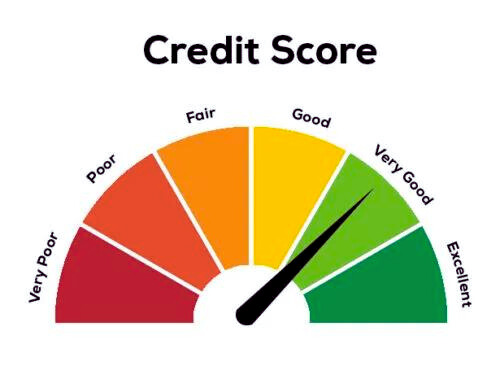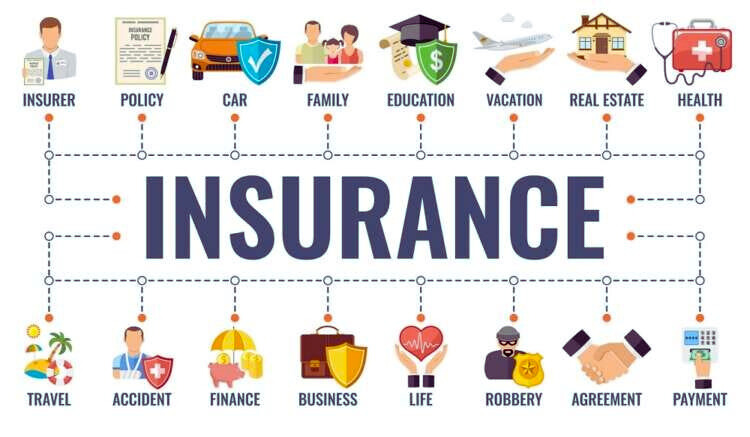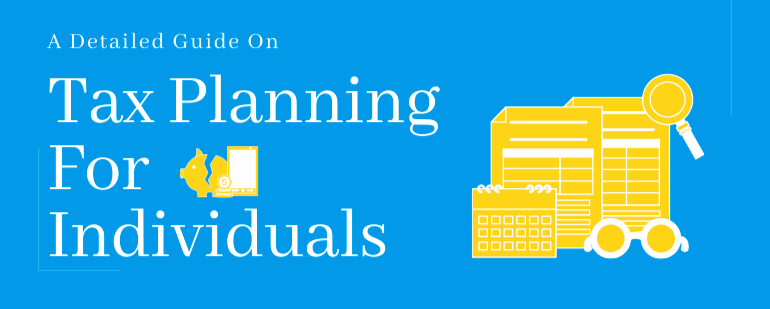Private finance is not just about managing your money; it’s about taking control of your financial destiny. Whether you’re planning for the short term or envisioning a comfortable retirement, understanding the basics of private finance is essential. Let’s delve into the intricacies of managing your finances and building a secure financial future.
Introduction to Private Finance

Private finance is the art and science of managing your money to achieve financial well-being. It involves making informed decisions about earning, spending, saving, and investing to meet your financial goals. The significance of private finance lies in its ability to empower individuals to take charge of their economic destinies.
Key Components of Private Finance
Income and Expenses
Managing income and expenses is a fundamental aspect of personal finance. Here are key practices to optimize this process:
- Create a Detailed Budget Plan: Develop a comprehensive budget that outlines your income sources and categorizes your expenses. Regularly review and adjust it as needed for financial stability and goal achievement.
- Track Expenses and Revenue: Keep a meticulous record of both expenses and income. This tracking helps identify spending patterns, enabling better financial decisions.
- Automate Data Entry: Embrace automation for expense tracking. Tools that automate data entry streamline the process and reduce errors in financial records.
- Implement Digital Receipt Management: Move towards digital receipt management to simplify record-keeping and enhance organization.
Savings and Investments
When considering savings and investments in 2024, it’s crucial to diversify and align strategies with financial goals. Here are key insights:
- Growth Stock Funds: These funds focus on companies with high growth potential, offering a chance for capital appreciation.
- Value Stock Funds: Invest in undervalued stocks, seeking potential growth as the market corrects.
- Small-Cap Stock Funds: Target smaller companies with growth potential, providing opportunities for higher returns.
- Large-Cap Stock Funds: Invest in established, large companies, providing stability and growth potential.
- International Stock Funds: Diversify globally, reducing risk by investing in international markets.
- Dividend Stock: Consider stocks with consistent dividend payouts for a combination of income and potential capital appreciation.
- High-yield Savings Accounts: These accounts offer competitive interest rates, providing a safe option for short-term savings.
- Certificates of Deposit (CDs): CDs provide a fixed interest rate for a set period, offering a low-risk investment option.
- Bonds: Bonds, especially government or high-grade corporate bonds, offer a stable income stream with lower risk compared to stocks.
- Real Estate: Explore real estate as an alternative investment, either through direct property ownership or real estate investment trusts (REITs).
Creating a Personal Budget

Importance of Budgeting
Budgeting holds paramount importance for both individuals and businesses. Here are key reasons emphasizing its significance:
- Financial Stability: A budget establishes financial stability by tracking expenses and ensuring bills are paid on time, contributing to overall financial well-being.
- Resource Availability in Business: For businesses, budgeting ensures adequate resource availability to meet organizational needs and objectives, promoting operational efficiency.
- Improved Financial Habits: Budgeting aids in developing and improving both short- and long-term financial habits. It helps manage debt effectively and fosters saving for future goals.
- Expense Control and Goal Setting: For individuals, budgeting facilitates control over expenses and effective goal setting. It acts as a guiding tool for managing income and expenditure.
- Avoiding Overspending and Debt: Budgeting prevents overspending, ensuring individuals stay within their financial means and avoid accumulating unnecessary debt.
- Facilitates Financial Planning: Both businesses and individuals benefit from budgeting by facilitating effective financial planning. It allows for informed decision-making and helps in achieving financial objectives.
How to Create an Effective Budget
Creating an effective budget is crucial for financial stability. Here are practical tips to help you develop a successful budget:
- Understand Your Income and Expenses: Begin by comprehensively identifying your sources of income and listing all monthly expenses.
- Set Clear Financial Goals: Define short-term and long-term financial objectives. This will guide your budgeting priorities.
- Categorize Expenses: Organize expenses into categories such as housing, utilities, groceries, and entertainment. This clarity aids in tracking and managing spending.
- Different Budgeting Strategies: Explore popular budgeting strategies like proportional budgeting, pay-yourself-first budgeting, zero-based budgeting, and envelope budgeting. Choose one that aligns with your financial preferences and goals.
- Record and Track Expenses: Maintain a record of your actual expenses regularly. This helps in identifying areas where adjustments can be made.
- Create a Routine: Establish a consistent routine for budgeting. Regularly review and update your budget to ensure it remains aligned with your financial situation.
- Distinguish Between Needs and Wants: Differentiate between essential needs and discretionary wants. Prioritize needs in your budget to cover essentials first.
- Use Budgeting Tools: Leverage tools like budgeting apps, spreadsheets, or financial software to streamline the budgeting process.
- Emergency Fund Allocation: Allocate a portion of your budget to building and maintaining an emergency fund. This provides a financial safety net.
- Seek Professional Guidance: If needed, consult financial experts or advisors for personalized advice on creating an effective budget.
Remember, a budget is a dynamic tool. Regularly revisit and adjust it as your financial circumstances change.
Managing Debt
Understanding Different Types of Debt
Debt can be broadly categorized into various types, each with its unique characteristics. Here are the main categories:
- Secured Debt: Tied to an asset, such as a house or car. If the borrower fails to repay, the lender can seize the asset. Examples include mortgages and auto loans.
- Unsecured Debt: Not backed by collateral. Lenders rely solely on the borrower’s creditworthiness. Credit cards and personal loans fall into this category.
- Revolving Debt: Allows borrowing up to a predetermined limit. As the balance is repaid, the credit becomes available again. Credit cards are a common example of revolving debt.
- Installment Debt: This involves fixed payments over a specific period. Mortgages and auto loans are examples where the borrower repays a set amount regularly until the debt is cleared.
Understanding these categories is crucial for effective financial management and debt repayment strategies.
Strategies for Debt Management
Effective debt management is crucial for financial well-being. Here are some strategies to help manage and reduce debt:
- Timely Payments: Pay bills as soon as they arrive to avoid late fees and improve credit scores.
- Assess Finances: Take stock of your accounts, check credit reports, and be honest about spending to understand your financial situation.
- Consolidation Opportunities: Look for opportunities to consolidate debt, potentially reducing interest rates and simplifying payments.
- Pay Beyond Minimums: Always aim to pay more than the minimum amount due. This accelerates debt repayment, saves on interest, and may boost your credit score.
- Debt Reduction Strategies: Leverage various debt reduction strategies, such as refinancing, consolidating loans, and understanding debt ratios.
- Know Your Limits: Understand how much debt you can afford, prevent overextension, and use debt as a tool wisely.
These strategies, when combined, can contribute to effective debt management and financial stability.
Importance of Emergency Funds

An emergency fund is a crucial financial safety net designed to cover unexpected expenses or financial emergencies. Here are key reasons highlighting its importance:
- Financial Stability: An emergency fund provides a buffer, ensuring financial stability during unforeseen circumstances such as job loss or income reduction.
- Unplanned Expenses: It serves as a dedicated cash reserve to handle unplanned expenses like medical bills, car repairs, or household repairs, preventing a financial crisis.
- Job Loss Mitigation: Softens the impact of unemployment, offering a financial cushion during periods of job loss or career transitions.
- Stress Reduction: Having an emergency fund reduces stress associated with unexpected financial challenges, allowing individuals to navigate crises more effectively.
Investing for the Future

Investing for the future involves adopting long-term investment strategies to achieve financial goals. Here are key principles and tips:
- Set Clear Goals: Align investments with specific financial goals, such as retirement or education, to tailor strategies accordingly.
- Diversify Portfolio: Spread investments across different asset classes to reduce risk and enhance potential returns.
- Stay Invested: Maintain a long-term perspective and avoid trying to time the market, allowing investments to grow over time.
- Choose a Strategy: Consider various investment strategies, such as growth investing, value investing, dividend investing, and dollar-cost averaging, based on individual preferences and risk tolerance.
- Start Early: Initiating investments early allows for the compounding effect, increasing the potential for wealth accumulation.
Types of Investments
Investments can be broadly categorized into three main types: equity, fixed-income, and cash or cash equivalents.
- Equity Investments: Also known as stocks, these represent ownership in a company. Investors buy shares and become shareholders, participating in the company’s success and losses.
- Fixed-Income Investments: This category includes bonds and other debt securities. Investors lend money to governments or corporations in exchange for periodic interest payments and the return of principal at maturity.
- Cash or Cash Equivalents: These are low-risk, highly liquid investments that include certificates of deposit (CDs), money market funds, and Treasury bills. They provide safety and quick access to funds.
Additionally, there are various specific types of investments within these categories, such as mutual funds, index funds, exchange-traded funds (ETFs), options, gold, and cryptocurrencies. Each investment type carries its own risk and return profile, making diversification a key strategy for managing risk in a portfolio.
Risk and Return Considerations
The risk-return tradeoff is a fundamental principle in finance that describes the correlation between the potential return on investment and the level of risk associated with it. Here’s a concise overview:
- Definition: The risk-return tradeoff suggests that the potential return on investment is typically associated with a proportional level of risk. Higher potential returns are often linked to higher risks, and vice versa.
- Efficient Market: In an efficient market, where information is quickly reflected in prices, higher risks are expected to correlate with stronger potential returns. Investors are generally compensated for taking on additional risk.
- Financial Management: In financial management, risk and return are interconnected. Higher-risk investments tend to offer the possibility of higher returns, but they also come with an increased likelihood of losses.
- Investment Risk: Various types of investments carry different levels of risk. For instance, aggressive growth funds, emerging markets, and foreign company stocks are generally considered higher-risk investments.
- Correlation: Risk and return are closely correlated in investing. Analyzing risks and returns is essential for making informed investment decisions.
Understanding the risk-return tradeoff is crucial for investors to align their investment strategy with their risk tolerance and financial goals.
Retirement Planning

Retirement planning is a comprehensive process that involves various steps to ensure financial security during one’s retirement years. Here is a summary of essential aspects:
- Identifying Income Sources: Understand and identify the potential sources of income during retirement. This may include pensions, Social Security, investments, and other income streams.
- Assessing Expenses: Evaluate and estimate future expenses in retirement. Consider factors such as living costs, healthcare, and lifestyle choices to determine the required income.
- Implementing a Savings Program: Develop and implement a savings strategy to accumulate the necessary funds for retirement. This often involves contributing regularly to retirement accounts such as 401(k)s, IRAs, or other investment vehicles.
- Managing Assets and Risk: Strategically manage investments and assess risk tolerance. This includes diversifying investments, adjusting asset allocations, and making informed decisions to optimize returns while considering risk.
- Setting Priorities: Prioritize financial goals and create a retirement plan aligned with personal objectives. This involves making decisions about when to retire, lifestyle choices, and balancing short-term and long-term financial needs.
- Regular Review and Adjustment: Periodically review the retirement plan and make necessary adjustments based on changes in income, expenses, investment performance, and life circumstances.
- Exploring Strategies: Consider various retirement savings and income strategies, such as saving a percentage of income annually, to meet specific financial goals during retirement.
Retirement planning is a dynamic process that requires ongoing attention and adaptation to ensure financial well-being in one’s later years.
The Significance of Planning for Retirement
Retirement planning is of paramount importance for several reasons:
- Financial Security: Planning for retirement ensures financial security during non-working years. It involves identifying income sources, estimating expenses, and implementing savings programs to maintain a comfortable lifestyle.
- Employee Benefits: Employers offering retirement plans attract and retain talented employees. Retirement benefits contribute to employee satisfaction and reduce training costs associated with employee turnover.
- Medical and Long-Term Care: A comprehensive retirement plan includes provisions for medical and potential long-term care costs. Planning ensures that necessary funds are available to cover healthcare expenses.
- Income Diversification: Retirement planning allows for income diversification, ensuring income from various sources. This approach provides financial flexibility and stability during retirement.
- Personalized Decision-Making: Choosing when to retire is a personal decision. Retirement planning enables individuals to make informed choices based on their financial goals and lifestyle preferences.
- Long-Term Financial Goals: Having a retirement plan aligns with long-term financial goals, offering opportunities to receive income from different sources and facilitating effective financial management.
Different Retirement Savings Options
Saving for retirement involves considering various strategies to secure financial stability in your post-working years. Here are some retirement savings options:
- 401(k) and 403(b) Plans: Take advantage of employer-sponsored plans like 401(k) or 403(b). Contribute consistently and benefit from potential employer matches.
- IRA (Individual Retirement Account): Traditional and Roth IRAs offer tax advantages. Traditional IRAs provide tax-deferred growth, while Roth IRAs offer tax-free withdrawals in retirement.
- High-Yield Savings Account: A safe option for emergency funds and short-term goals, providing liquidity and stability.
- Annuities: Provide a steady stream of income during retirement. Consider fixed, variable, or indexed annuities based on your risk tolerance.
- Employer Pensions: Some employers offer pension plans, providing a fixed income during retirement based on years of service and salary history.
- Real Estate Investments: Owning rental properties or real estate investment trusts (REITs) can generate rental income or dividends.
- Stocks and Mutual Funds: Invest in a diversified portfolio of stocks and mutual funds for potential long-term growth.
- Health Savings Account (HSA): If eligible, contribute to an HSA, which allows tax-free withdrawals for qualified medical expenses in retirement.
Understanding Credit Scores

Importance of Credit Scores
Your credit score is a crucial financial indicator that significantly impacts various aspects of your life. Here’s why credit scores are important:
- Financial Opportunities: A good credit score opens doors to favorable financial opportunities, such as lower interest rates on loans and credit cards.
- Cost Savings: A higher credit score can lead to reduced interest rates, saving you money over the life of loans and credit accounts.
- Access to Credit: A good credit score enhances your ability to secure credit, whether for mortgages, car loans, or personal loans.
- Employment Opportunities: Some employers may check credit scores during the hiring process, especially for positions involving financial responsibilities.
- Insurance Rates: Credit scores can influence insurance premiums, with better scores often leading to lower rates.
- Rental Approval: Landlords may consider your credit score when approving rental applications.
Maintaining a good credit score is vital for financial well-being and can positively impact your overall quality of life.
Ways to Improve and Maintain a Good Credit Score
Maintaining and improving a good credit score is essential for financial health. Follow these guidelines:
- Timely Payments: Pay your bills on time, as payment history significantly influences your credit score. Automate payments to avoid missed deadlines.
- Credit Utilization: Keep your credit card balances below the credit limit. Aim for a credit utilization ratio of 30% or less to positively impact your score.
- Maintain Credit History: Keep older credit cards active to maintain a longer credit history, which can positively affect your credit score.
- Diverse Credit Mix: Maintain a diverse mix of credit types, such as credit cards, installment loans, and mortgages. This diversity can have a positive impact on your credit score.
- Regular Credit Checks: Monitor your credit reports regularly for errors and discrepancies. Dispute any inaccuracies to ensure your credit information is correct.
- Manage Debt Responsibly: Maintain a healthy debt-to-income ratio and avoid maxing out credit accounts. Managing your debt responsibly is crucial for a good credit score.
- Review Credit Reports: Periodically review your credit reports from major credit bureaus to identify and address any issues promptly.
- Strategic Credit Building: Consider strategies like paying off high credit card balances, disputing errors on your credit report, or becoming an authorized user on someone else’s credit account.
Insurance for Financial Security

Types of Insurance to Consider
When planning your financial security, consider these essential types of insurance:
- Life Insurance: Provides financial protection for your loved ones in the event of your death, helping cover expenses and replace lost income.
- Health Insurance: Ensures you have access to medical care and helps cover healthcare expenses, protecting against high medical costs.
- Auto Insurance: Mandatory for vehicle owners, it provides coverage for car accidents, damages, and liability protection.
- Homeowners or Renters Insurance: Protects your home or rental property against damage or loss, covering belongings and offering liability protection.
- Umbrella Insurance: Offers additional liability coverage beyond standard policies, protecting against lawsuits and major claims.
- Disability Insurance: Provides income replacement if you’re unable to work due to a disability, ensuring financial stability.
- Long-Term Care Insurance: Covers the costs of long-term care services, including nursing home care or in-home assistance.
These insurance types form a comprehensive strategy to protect against unforeseen events and ensure financial well-being.
Determining the Right Coverage
Determining the right coverage for retirement planning involves a strategic approach. Follow these steps:
- Identify Income Sources: Determine your expected income sources in retirement, such as Social Security, pensions, and investment accounts.
- Estimate Expenses: Analyze your anticipated expenses during retirement, including living costs, healthcare, and leisure activities.
- Calculate Income Replacement Rate: Aim to replace a percentage of your pre-retirement income. A common guideline is around 75% to 85% of your current income.
- Assess Risk Tolerance: Evaluate your risk tolerance and investment preferences to determine the appropriate mix of assets in your retirement portfolio.
- Review and Adjust Regularly: Periodically reassess your retirement plan, especially when there are significant life changes, economic shifts, or adjustments in your financial goals.
Determining the right coverage is an ongoing process that requires flexibility and adaptability to ensure your retirement plan aligns with your evolving needs and circumstances.
Tax Planning for Individuals

Basic Tax Planning Strategies
Basic tax planning strategies aim to minimize tax liability by leveraging legal deductions, credits, and timing income and expenses. Here are key strategies:
- Contribute to Retirement Plans: Maximize contributions to tax-advantaged retirement accounts like 401(k)s or IRAs to reduce taxable income.
- Utilize Tax Deductions: Leverage deductions such as mortgage interest, charitable contributions, and eligible business expenses to reduce taxable income.
- Tax-Loss Harvesting: Offset capital gains with capital losses by strategically selling investments at a loss.
- Income Deferral or Acceleration: Consider deferring income to the next tax year or accelerating deductions to the current year for optimal tax planning.
- Leverage Tax Credits: Identify and utilize available tax credits, such as education credits or energy-related credits, to directly reduce tax liability.
- Optimize Compensation and Benefits: Strategically structure compensation and benefits to minimize tax impact.
These strategies require careful consideration of individual financial situations and may evolve based on changes in tax laws and personal circumstances.
Maximizing Deductions and Credits
To maximize deductions and credits, consider the following strategies:
- Tax Bracket Understanding: Know your tax bracket to tailor strategies that align with your income level.
- Utilize Tax Credits: Maximize available tax credits as they directly reduce your tax liability, providing significant savings.
- Standard Deduction vs. Itemizing: Evaluate whether to take the standard deduction or itemize deductions based on your financial situation, choosing the option that yields higher savings.
- Year-End Tax Planning: Implement year-end tax planning strategies, such as maximizing deductions and credits before the tax year concludes.
- Business Tax Planning: For businesses, utilize strategies like deferring income and expenses to optimize tax benefits.
These strategies, tailored to individual circumstances, can significantly enhance tax efficiency, resulting in reduced tax obligations.
Estate Planning

Estate planning involves creating a comprehensive strategy for managing and distributing assets during one’s lifetime and after death. Several key considerations and strategies are essential in the estate planning process:
- Wills and Trusts: Drafting a will is fundamental to specifying how assets should be distributed. Trusts, especially irrevocable trusts, can be used to minimize estate taxes and provide specific instructions for asset distribution.
- Irrevocable Trusts: These trusts can effectively reduce potential future tax liabilities and shift assets out of the taxable estate.
- Tax-Efficient Planning: Implementing tax-efficient strategies is crucial. This includes maximizing available deductions, and credits, and utilizing tax-efficient investment vehicles.
- Estate Tax Planning: Strategies to minimize estate taxes may involve gifting, taking advantage of tax exemptions, and other techniques.
- Regular Review: Estate plans should be regularly reviewed and updated to reflect changes in financial situations, family dynamics, and relevant laws.
- Beneficiary Designations: Ensure beneficiary designations on accounts and insurance policies align with your estate planning goals.
Estate planning is a dynamic process that should evolve with life changes and legal developments. Seeking advice from legal and financial professionals is advisable to tailor the plan to individual needs.
Importance of Planning for the Future
Planning for the future is crucial for individuals and businesses alike. It involves both short-term and long-term planning, each serving specific purposes:
- Strategic Growth: Long-term planning provides a roadmap for achieving lasting visions and organizational growth, enabling businesses to set concrete goals and navigate challenges proactively.
- Control and Proactiveness: A long-term business strategy allows organizations to exert greater control over their future by being proactive rather than reactive to market conditions. This proactive approach enhances adaptability and resilience.
- Financial Stability: Planning ensures financial stability by forecasting and managing resources effectively. Individuals benefit by securing their financial future through savings, investments, and retirement planning.
- Risk Mitigation: Future planning helps identify potential risks and uncertainties, allowing individuals and businesses to develop strategies for risk mitigation. This minimizes the impact of unforeseen events.
- Strategic Advantage: Long-term planning provides a strategic advantage, aligning resources and efforts toward achieving objectives. It distinguishes between what needs to be achieved (strategic planning) and the essential roadmap for achieving it (long-term planning).
- Personal Development: On an individual level, planning for personal and professional growth involves setting goals, acquiring new skills, and making informed decisions that contribute to overall well-being.
In summary, planning for the future is not only about setting goals but also about developing strategies to achieve them, fostering adaptability, and ensuring resilience in the face of uncertainties.
Wills, Trusts, and Inheritance Considerations
Estate planning involves crucial considerations related to wills, trusts, and inheritances:
- Wills: A will is a legal document that outlines how a person’s assets and properties should be distributed upon their death. It allows individuals to specify beneficiaries, guardians for minors, and an executor to manage the estate.
- Trusts: Trusts are fiduciary arrangements where a trustee holds assets for the benefit of beneficiaries. They offer flexibility, and privacy, and can help avoid probate. Common types include revocable living trusts, irrevocable trusts, and testamentary trusts.
- Inheritance Considerations: When receiving an inheritance, it’s crucial to consider factors like taxes, investment choices, and financial planning. Inheritors should assess the impact on their overall financial strategy and make informed decisions.
- FreeWill Services: Platforms like FreeWill offer online will-making services, providing a simple and free way to create a legal will. These tools can be convenient for individuals looking to initiate their estate planning process.
Balancing Short-Term and Long-Term Goals

Balancing short-term and long-term financial goals is crucial for a stable and secure financial future. Here are key strategies:
- Prioritize Objectives: Clearly define short-term goals (e.g., emergency fund, monthly expenses) and long-term goals (e.g., retirement, buying a home). Prioritize based on urgency and importance.
- Budgeting: Develop a comprehensive budget that allocates funds for both short-term needs and long-term investments. Regularly review and adjust the budget as financial circumstances change.
- Emergency Fund: Maintain an emergency fund to cover unforeseen short-term expenses, preventing the need to dip into long-term investments during financial emergencies.
- Investment Strategy: Diversify investments to balance risk and return. Consider a mix of short-term, liquid assets, and long-term investments like retirement accounts for wealth accumulation.
- Regular Reviews: Periodically reassess goals, financial situations, and market conditions. Adjust the balance between short-term and long-term strategies as needed.
- Flexibility: Be adaptable. Life circumstances change, and financial plans may need adjustments. Remain flexible to accommodate evolving needs and goals.
Keeping Up with Financial Education

Staying informed and up-to-date on financial education is crucial for personal and professional growth. Here are effective ways to keep up with financial education:
- Jump$tart Coalition: Explore the premier online library of financial education resources provided by the Jump$tart Coalition for teachers, parents, caregivers, and anyone committed to financial literacy.
- Continuous Learning for Entrepreneurs: Entrepreneurs can benefit from continuous learning through courses, webinars, and industry-specific conferences. Platforms like Forbes offer insights to keep businesses competitive and innovative.
- 2024 Financial Education Bill Tracker: Stay informed about legislative movements related to financial education using the 2024 Financial Education Bill Tracker, tracking state-level initiatives.
- Financial Literacy Month 2024: Take advantage of Financial Literacy Month 2024 by accessing event information, tips, and resources to enhance financial knowledge.
- EVERFI’s Financial Literacy Courses: EVERFI provides free online resources and lesson plans for K-12 students, supporting financial literacy and education through its Financial Literacy for Students program.
- Free or Low-Cost Financial Resources: Utilize resources compiled by banksouthern.com to access free or low-cost financial education materials, including counseling, coaching, and educational programs.
The Ever-Changing Landscape of Finance
The finance industry continually evolves, and several trends shape its landscape in 2024:
- True Technology Integration: Financial planning is witnessing true integration of technology, streamlining processes, enhancing client experiences, and improving advisory services.
- Holistic Advice Evolution: Financial advisors are shifting towards holistic advice, considering clients’ comprehensive financial well-being rather than focusing on isolated aspects.
- Fiduciary Duty Changes: Changes in fiduciary duty standards are impacting financial planning practices, emphasizing transparency and accountability.
- ESG Investments: Environmental, Social, and Governance (ESG) investments gain prominence, reflecting a growing emphasis on sustainable and socially responsible financial decisions.
- Rising Unemployment Concerns: Experts express concerns about rising unemployment rates, reaching as high as 4.8% in 2024, emphasizing the importance of financial preparedness.
- Independent Advisor Growth: A notable trend is the increasing number of financial advisors opting for independence, with aggressive growth expected throughout the next decade.
- Wealth Management Tech Trends: Technology trends in wealth management are critical, with a focus on innovation and adaptation to industry advancements.
Resources for Ongoing Financial Education
Ensuring ongoing financial education is crucial, and there are various resources available for individuals seeking to enhance their financial literacy:
- OCC Financial Literacy Resource Directory: The OCC provides a comprehensive directory covering financial literacy resources, addressing issues and events important for bankers, organizations, and consumers.
- Investopedia’s Best Resources: Investopedia offers a diverse range of resources, including books, magazines, podcasts, and community events, providing valuable tools to increase financial literacy.
- FDIC Money Smart Program: The FDIC’s Money Smart program offers tools to teach financial education, such as lesson plans, videos, and various resources, aiding in financial literacy education.
- CFPB Adult Financial Education Resources: The Consumer Financial Protection Bureau (CFPB) provides a range of resources by topic, covering areas like auto loans, credit cards, debt collection, mortgages, and more.
- NCUA Financial Literacy & Education Resource Center: The NCUA offers resources to assist credit unions in promoting financial literacy, aiding members in making informed financial decisions.
- Next Gen Personal Finance: Educators can explore Next Gen Personal Finance, offering a popular free financial literacy curriculum, including resources like current event questions and more.
Navigating Economic Changes

Adaptation emerges as a key theme for navigating economic changes in 2024. As projected by various sources, economic growth is expected to decelerate, influenced by the broader effects of monetary policy and fading post-pandemic tailwinds. Forecasts suggest a potential mild slowdown, lower interest rates, and a cautious economic environment. Experts emphasize the importance of monitoring major economic developments and being adaptable in the face of evolving circumstances.
Common Mistakes to Avoid
Financial planning involves avoiding common mistakes to ensure a secure financial future. Key pitfalls to steer clear of include:
- Failure to Make a Financial Plan: Failing to create a comprehensive financial plan can lead to uncertainty and missed opportunities.
- Lack of Communication: Insufficient communication about financial matters can lead to misunderstandings and financial strain.
- Inadequate Emergency Fund: Not having a proper emergency fund can leave individuals vulnerable to unexpected expenses.
- Insufficient Protection: Neglecting insurance coverage can expose individuals and their assets to various risks.
- Procrastination on Savings: Delaying savings can hinder wealth accumulation and financial security.
- Excessive Spending: Frivolous and excessive spending can derail financial goals.
Conclusion
Private finance is a journey that requires continuous learning and adaptation. By understanding the key components, making informed decisions, and avoiding common pitfalls, you can build a secure financial future. Remember, private finance is not just about numbers; it’s about empowering yourself to create the life you envision.
Read also: What is Abdominal Surgery?
FAQs
Q. Is private finance only for wealthy individuals?
Private finance is for everyone, regardless of income. It’s about making informed decisions to achieve financial well-being.
Q. How often should I revisit my budget?
Regularly reviewing your budget, at least monthly, ensures it stays aligned with your financial goals and adjusts to any changes in your circumstances.
Q. Why is a good credit score important?
A good credit score opens doors to better interest rates on loans and credit cards, saving you money in the long run.
Q. Can I start investing with a small amount of money?
Yes, many investment options allow you to start with a small amount. The key is to start early and be consistent.
Q. What’s the best way to stay updated on changes in personal finance?
Utilize online resources, attend workshops, and follow reputable financial blogs to stay informed about the ever-changing landscape of personal finance.




